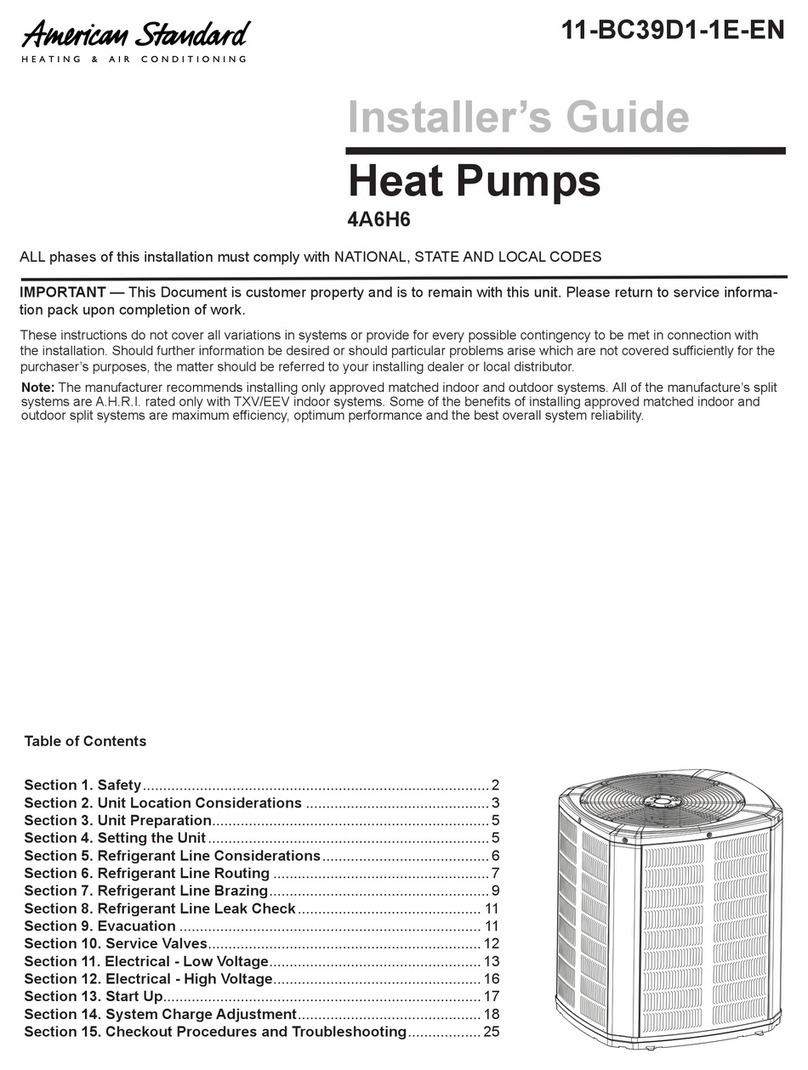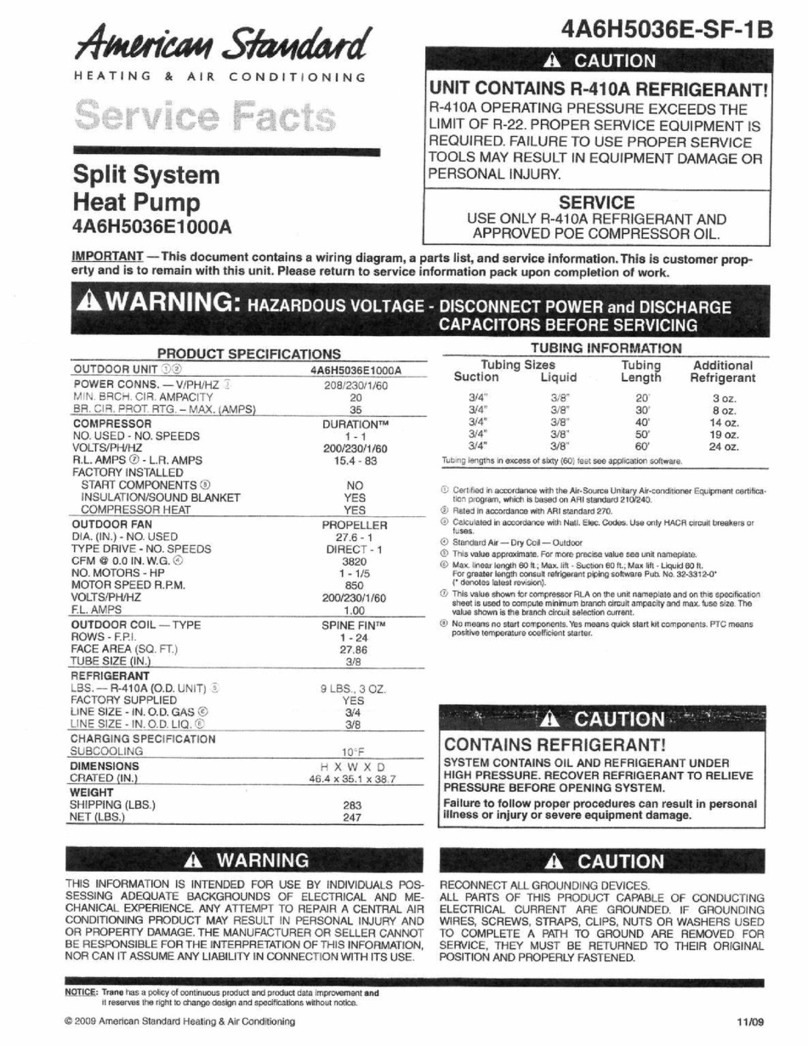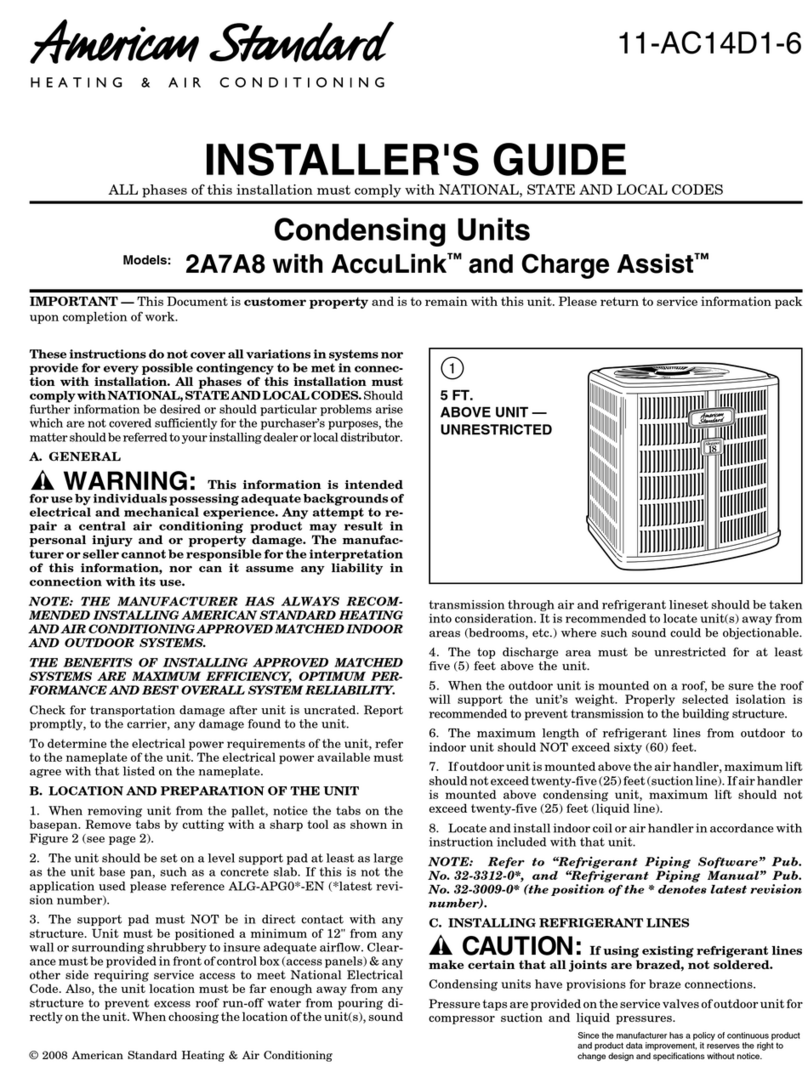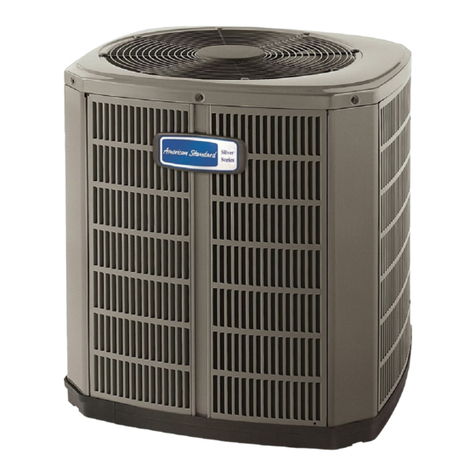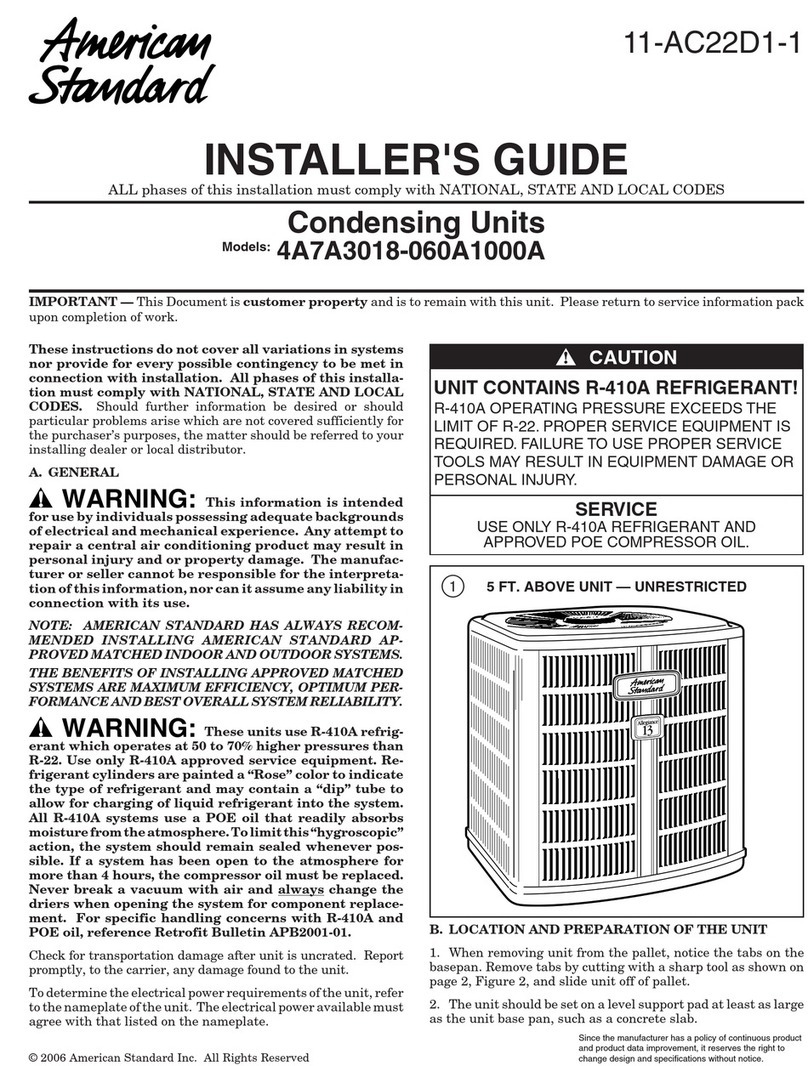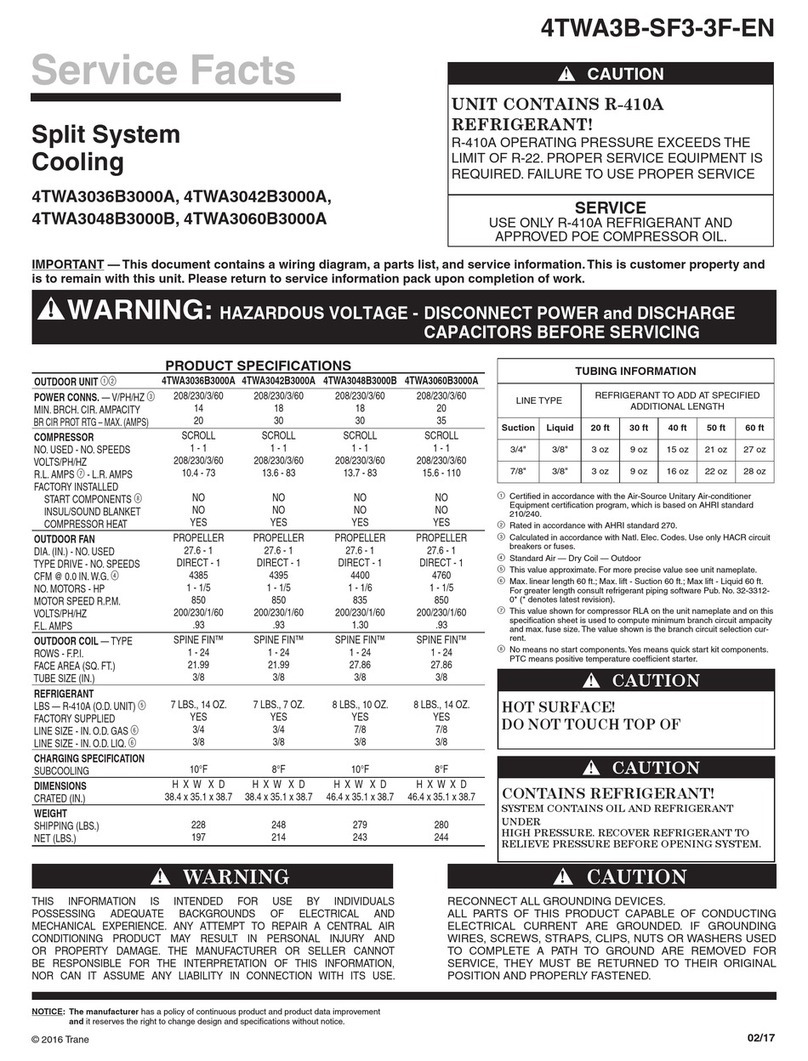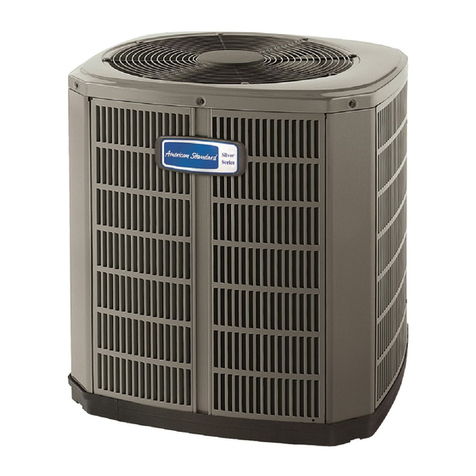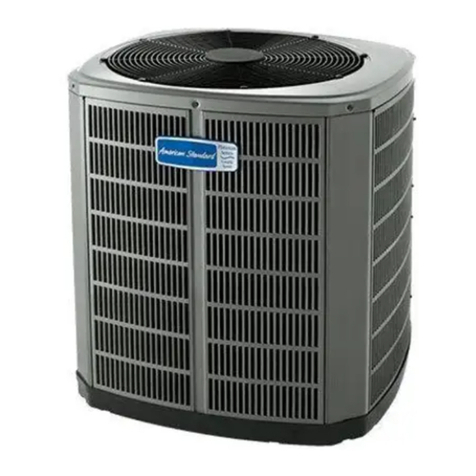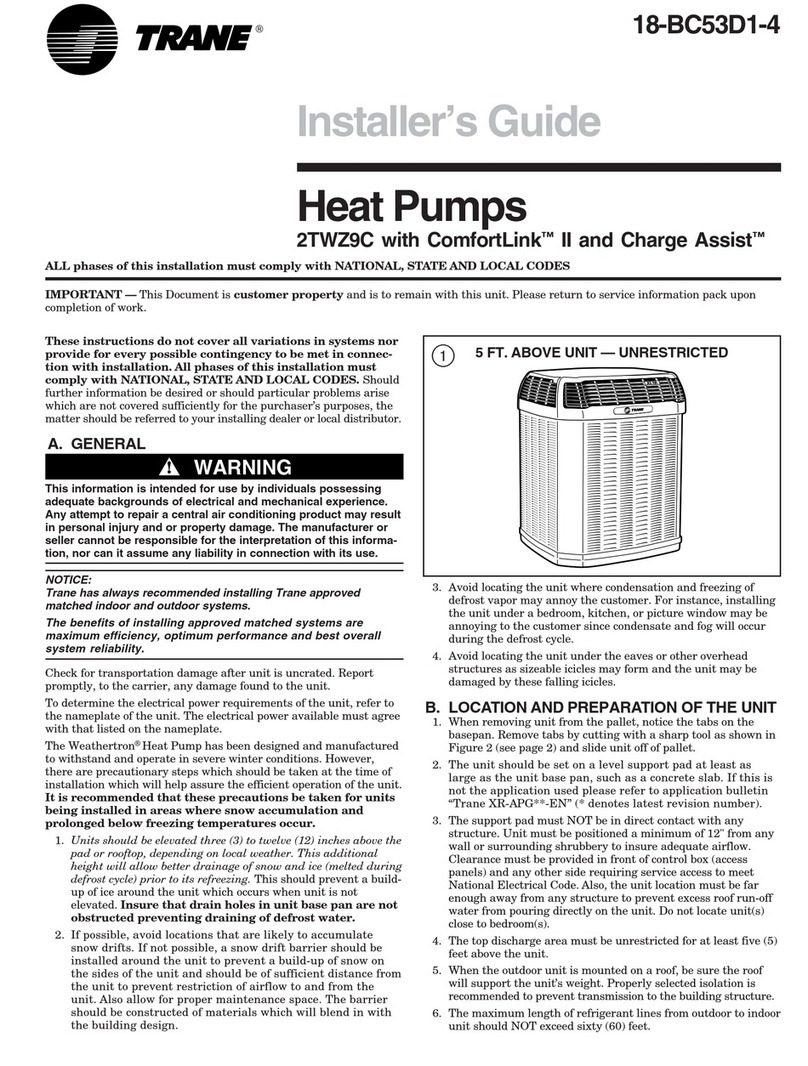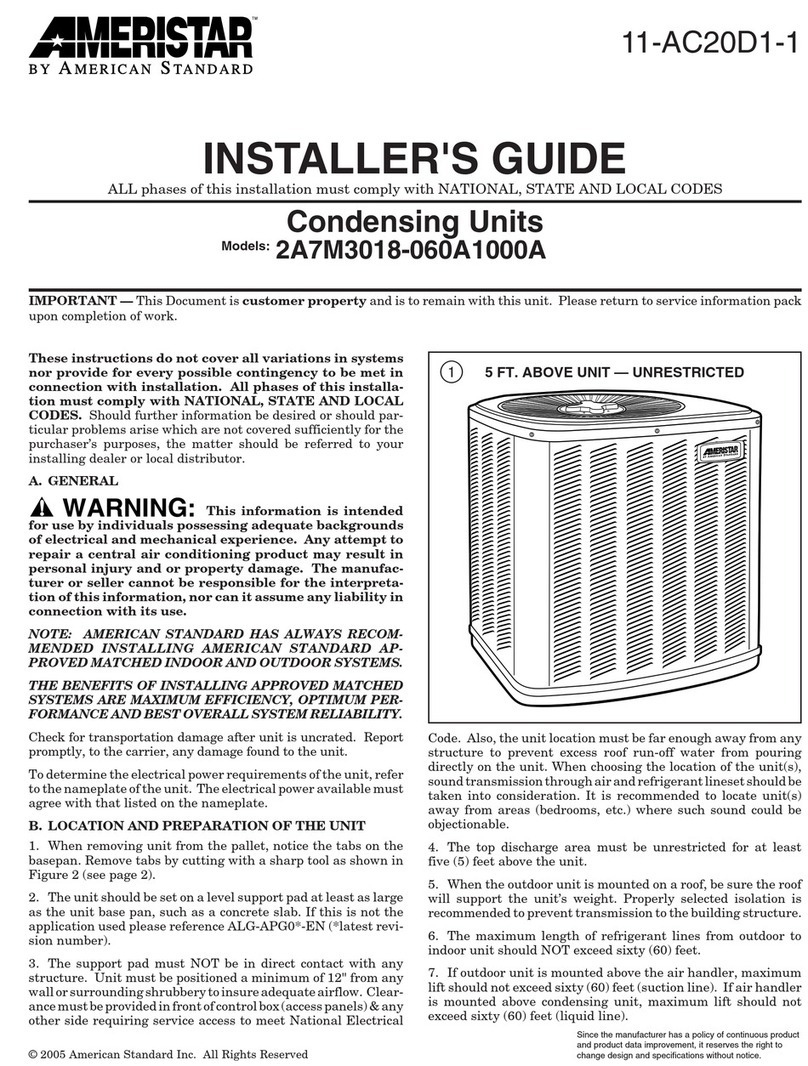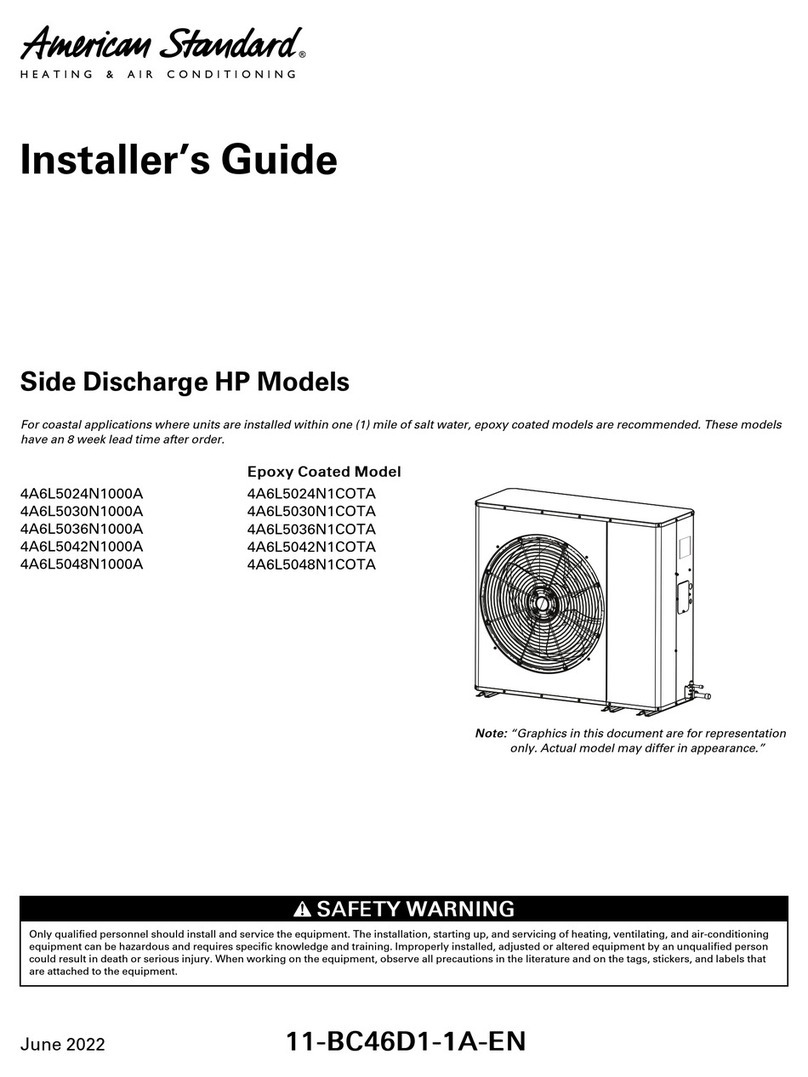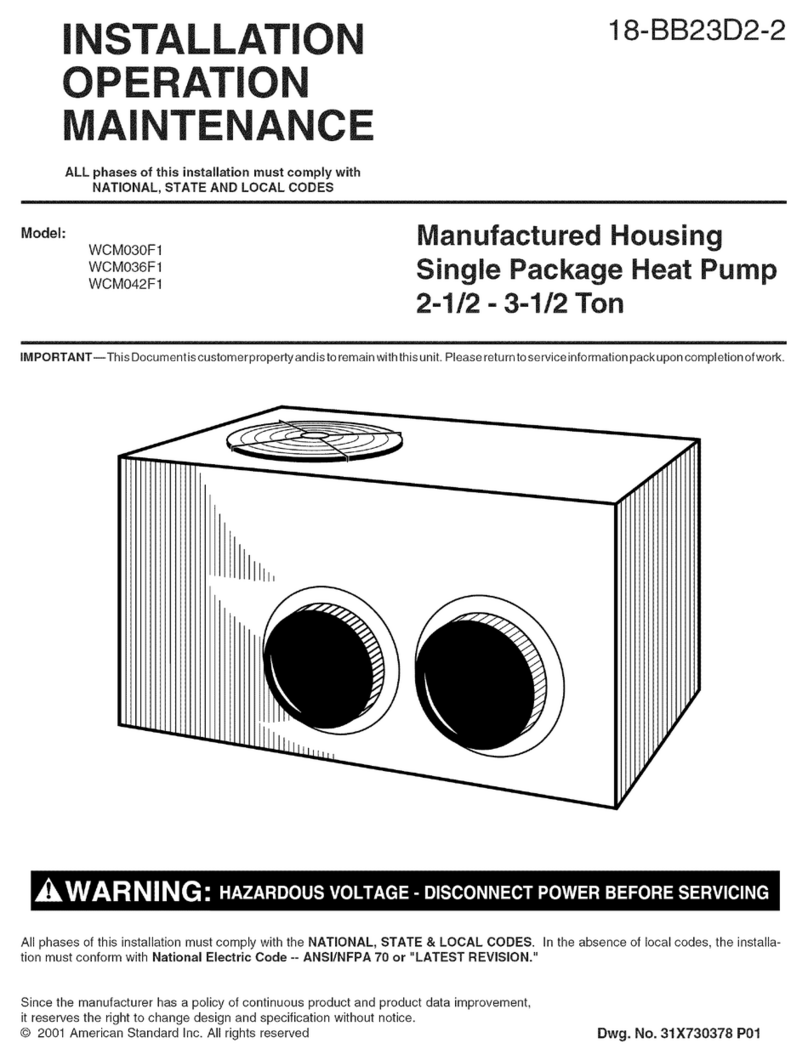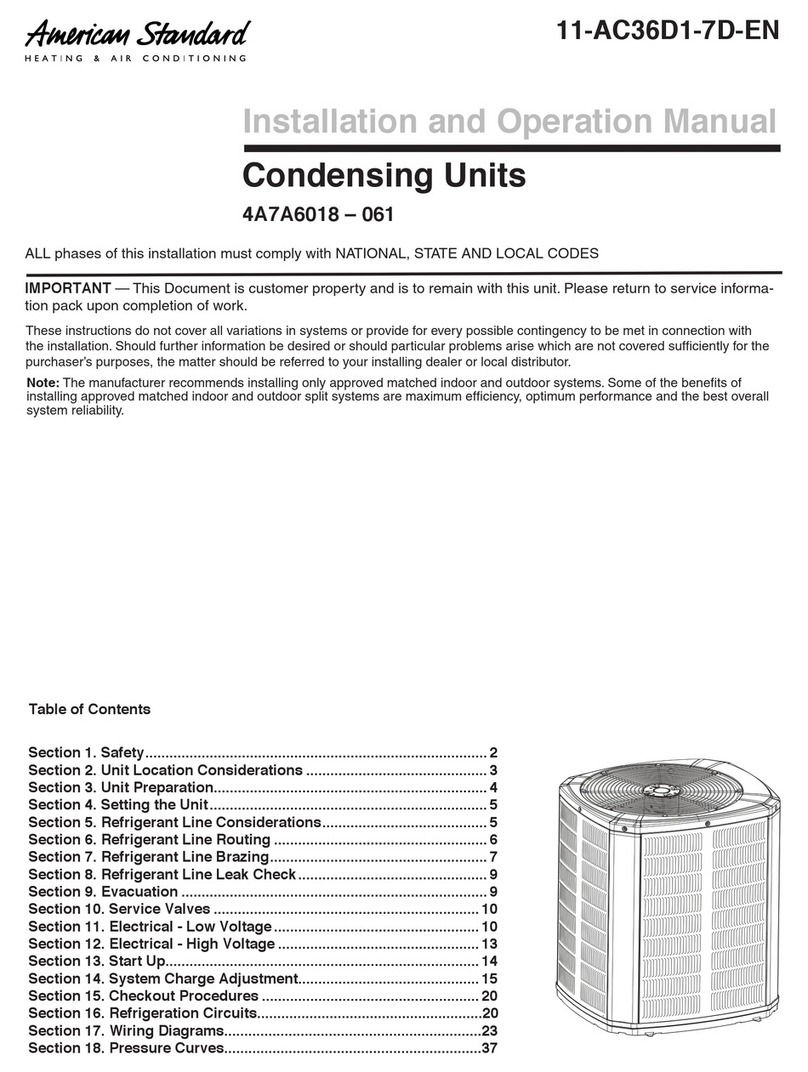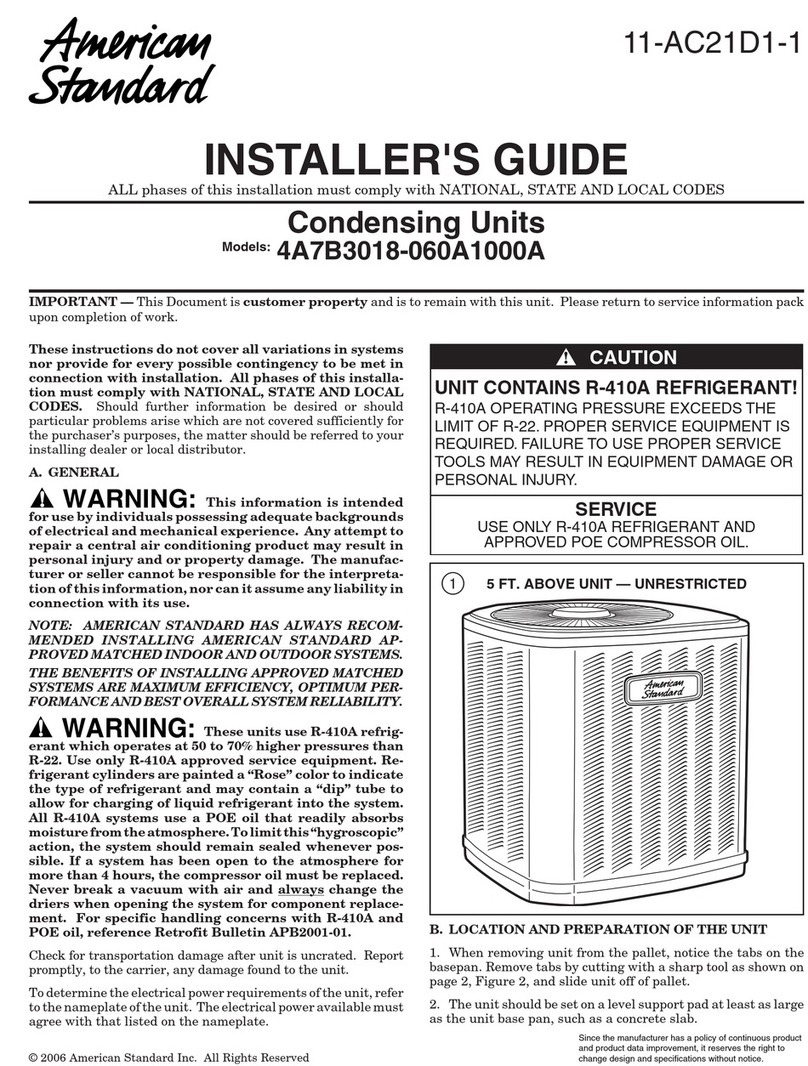
11-BC11D1-9 3
Installer’s Guide
CAP 1/4 TURN ONLY
COUNTERCLOCKWISE
FOR FULL OPEN
POSITION
VALVE STEM
GAS LINE CONNECTION
UNIT SIDE
OF VALVE
PRESSURE TAP PORT
GAS LINE BALL SERVICE VALVE
4
6. Precautions should be taken to avoid heat damage
to the pressure tap valve core during brazing. It is
recommended that the pressure tap port valve core be
removed and a wet rag wrapped around the valve body.
NOTE:
Use care to make sure that no moisture enters pressure tap port,
while wet rag is being used.
NOTE:
Precautions should be taken to avoid heat damage to basepan
during brazing. It is recommended to keep the flame directly off
of the basepan.
7. Use a Dry Nitrogen Purge and Brazing Alloy without flux
when brazing the field line to the copper factory connection.
Flow dry nitrogen into either valve pressure tap port, thru the
tubing and out the other port while brazing.
8. Braze using accepted good brazing techniques.
LEAK CHECK
IMPORTANT:
Replace pressure tap port valve core before attaching hoses for
evacuation.
After the brazing operation of refrigerant lines to both the outdoor
and indoor unit is completed, the field brazed connections must
be checked for leaks. Pressurize through the service valve ports,
the indoor unit and field refrigerant lines with dry nitrogen to 350-
400 psi. Use soap bubbles or other leak-checking methods to see
that all field joints are leak-free! If not, release pressure; then
repair!
SYSTEM EVACUATION
NOTE:
Since the outdoor unit has a refrigerant charge, the gas and
liquid line valves must remain closed.
1. Upon completion of leak check, evacuate the refrigerant lines
and indoor coil before opening the gas and liquid line valves.
2. Attach appropriate hoses from manifold gauge to gas and
liquid line pressure taps.
NOTE:
Unnecessary switching of hoses can be avoided and complete
evacuation of all lines leading to sealed system can be accom-
plished with manifold center hose and connecting branch hose to
a cylinder of R-410A and vacuum pump.
3. Attach center hose of manifold gauges to vacuum pump.
4. Evacuate until the micron gauge reads no higher than 350 mi-
crons.
5. Close off valve to vacuum pump and observe the micron
gauge. If gauge pressure rises above 500 microns in one (1)
minute, then evacuation is incomplete or system has a leak.
6. If vacuum gauge does not rise above 500 microns in one (1)
minute, the evacuation should be complete.
7. With vacuum pump and micron gauge blanked off, open valve
on R-410A cylinder and charge refrigerant lines and indoor
coil with vapor to tank pressure of R-410A supply.
8. Close valve on R-410A supply cylinder. Close valves on mani-
fold gauge set and remove refrigerant charging hoses from
liquid and gas pressure tap ports.
NOTE:
DO NOT VENT REFRIGERANT INTO THE ATMOSPHERE.
NOTE:
A 3/16" Allen wrench is required to open liquid line service valve.
A 1/4" Open End or Adjustable wrench is required to open gas
line valve. A 3/4" Open End wrench is required to take off the
valve stem cap.
9. The liquid line shut-off valve can now be opened. Remove
shut-off valve cap. Fully insert hex wrench into the stem and
backout counterclockwise until valve stem just touches rolled
edge (approximately five [5] turns) observing WARNING
statement on page 2. See Figure 3.
10. Replace liquid service pressure tap port cap and valve stem
cap. These caps MUST BE REPLACED to prevent leaks.
Replace valve stem and pressure tap cap finger tight, then
tighten an additional 1/6 turn.
11. The gas valve can now be opened. For a ball type gas valve,
open the gas valve by removing the shut-off valve cap and turn-
ing the valve stem 1/4 turn counterclockwise, using 1/4" Open
End or Adjustable wrench. See Figure 4 and refer to Step 8
prior to opening gas valve.
12. The gas valve is now open for refrigerant flow. Replace valve
stem cap to prevent leaks. Again, these caps MUST BE RE-
PLACED to prevent leaks. Replace valve stem and pressure
tap cap finger tight, then tighten an additional 1/6 turn. See
Figure 4.
If refrigerant lines are longer than fifteen (15) feet and/or a
different size than recommended, it will be necessary to adjust
system refrigerant charge upon completion of installation. See
unit Service Facts.
E. ELECTRICAL CONNECTIONS
1. Power wiring and grounding of equipment must comply with
national, state and/or local codes.
2. Power supply must agree with equipment nameplate.
3. Install a separate disconnect switch at the outdoor unit.
4. Ground the outdoor unit per code requirements.
5. Provide flexible electrical conduit whenever vibration trans-
mission may create a noise problem within the structure.
6. The use of color coded low voltage wire is recommended to
simplify connections between the outdoor unit, the AccuLink™
control and the indoor unit.
Table 1 – NEC Class II Control Wiring
NOTE:
The maximum total cable length for the entire Comfort Control
communicating system is 500 ft. 18 AWG.
7. Mount the AccuLink™ control in accordance with instruction
included with the AccuLink™ control. Wire per appropriate
hook-up diagram (included in these instructions).
AccuLink™ Control Wiring
WIRE SIZE MAX. WIRE LENGTH
18 AWG 250 FT
Live Electrical Components!
During installation, testing, servicing and troubleshooting of
this product, it may be necessary to work with live electrical
components. Failure to follow all electrical safety precautions
when exposed to live electrical components could result in
death or serious injury.

